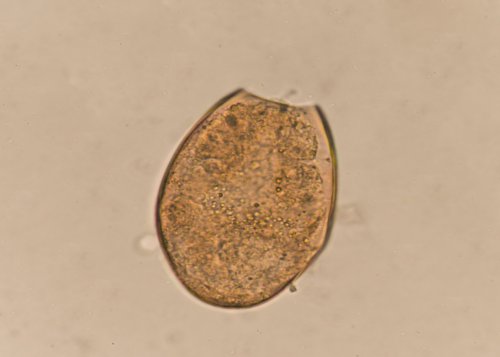
Credit: iStock.com/champja
Cyclosporiasis is a parasitic infection that can cause you to become extremely ill.
A cyclospora infection begins with typical food poisoning symptoms. But, if left untreated, it can lead to long term problems like Reiter’s syndrome, biliary disease, and acalculous cholecystitis.
Read on to know all about cyclospora outbreaks, including cyclosporiasis causes, as well as treatment and prevention.
Cyclosporiasis Symptoms
Cyclosporiasis symptoms are very much like those of food poisoning. The symptoms may last for a few days or a few weeks, depending on the severity of the infection, and may also reoccur. So, you may think that they’ve finally disappeared, only to find the symptoms return hours later. The symptoms usually include:
- A general feeling of unwellness
- Fatigue that may continue long after the other symptoms have disappeared
- Bloating, flatulence, and burping
- Stomach cramps
- Loss of appetite and weight loss
- Bouts of diarrhea or constipation
- Frequent and watery diarrhea
- Nausea and vomiting
- Muscle aches
- A fever
Cyclosporiasis Causes
The main cause of cyclosporiasis is a microscopic parasite called cyclospora cayetanensis. It’s usually transmitted by someone else that has had the same parasite. But, the parasite is not infectious for weeks, until it has passed in a bowel movement.
More than likely, the parasite came in contact with you through food or drink that has been contaminated with infected fecal matter. While people who live in or travel to developing countries are more at risk of being infected, the problem has spread to the rest of the world. And, if you have contact with contaminated food or water, you are at risk.
Cyclosporiasis Diagnosis
As we mentioned, the symptoms of cyclosporiasis are incredibly similar to other types of food poisoning and viral infections, which make them difficult to diagnose. So, if you’ve been suffering from the symptoms above, the first step is to see a doctor.
The doctor will consider your recent medical history and may ask you about your recent travel history. If the doctor feels that there is enough evidence to warrant further investigation, you may need to provide a stool sample for further tests. Unfortunately, the main way to confirm a cyclosporiasis diagnosis is through laboratory tests in a stool sample, as the parasite will not show up in blood or urine tests.
There are other more invasive tests on internal fluids such as intestinal fluids. These tests may reveal similar results, but stool samples are fairly standard. Once your doctor confirms a diagnosis, you can move on to your treatment options.
Cyclosporiasis Treatment
There are a few ways to treat cyclosporiasis. If the doctor thinks your healthy enough and the symptoms appear to be passing, he or she may let your body just try and take care of it on its own. But, if the infection is severe enough, antibiotics may be prescribed instead.
The main medication used to treat the infection is a combination antibiotic called trimethoprim-sulfamethoxazole. But, some people may be unable to take this combination antibiotic for various reasons. So, for those people, ciprofloxacin or nitazoxanide is often recommended.
While you may be able to come out of it on your own, it is important to get a doctor’s advice. The reason is that prolonged exposure to the infection can increase the risk of you transmitting it to others. Also, the infection can have more serious effects on your health that you may be unaware of.
Cyclosporiasis Prevention
You can prevent cyclosporiasis by avoiding contaminated water and food. This can be done by drinking bottled water and avoiding ready-to-eat produce. This tip is especially important if you are traveling in developing countries. It is also recommended to boil any water that you will be drinking or using to cook in these situations.
Washing your fruits and vegetables can help reduce the risk of a cyclosporiasis infection. But, this is by no means a guaranteed way of preventing the infection from occurring.
Cyclosporiasis Should Be Taken Seriously
Cyclosporiasis can have serious implications just like any parasitic infection. In addition to the issues mentioned here, there are other symptoms to worry about, like dehydration.
Severe complications are always a possibility if the infection isn’t taken seriously and treated. Hopefully, this article has given you all the information you need to spot the possibility of a cyclospora infection before it does too much damage. Also, the tips provided here can help you to avoid the infection altogether.
Related Articles:
How Long Do Food Poisoning Symptoms Last?
Sources:
Marler, B., “What is Cyclosporiasis?” Food Poison Journal, October 30, 2010; http://www.foodpoisonjournal.com/food-poisoning-information/what-is-cyclosporiasis/#.WY14wneGN1O, last accessed August 11, 2017.
“Parasites – Cyclosporiasis (Cyclospora Infection),” Centers for Disease Control and Prevention, July 28, 2016; https://www.cdc.gov/parasites/cyclosporiasis/index.html, last accessed August 11, 2017.
Davis, C.P., “Berry, Berry, Quite Contrary…Cyclospora Outbreaks,” MedicineNet, June 28, 2016; http://www.medicinenet.com/cyclospora_parasite/views.htm, last accessed August 11, 2017.
“Cyclospora infection,” Mayo Clinic, August 23, 2017; http://www.mayoclinic.org/diseases-conditions/cyclospora/home/ovc-20344837, last accessed August 11, 2017.
“Diagnosis of Cyclospora,” The Schmidt Firm, https://www.schmidtlaw.com/diagnosis-of-cyclospora/, last accessed August 11, 2017.
